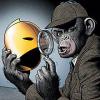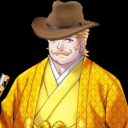Super Freaks
The ‘Super Freaks’ are a loose term for a pan-religious movement that began on the West Coast of the United States in the late 1960s. Inspired by hippie culture, the New Age movement, and the general alienation of the period, members of what was sometimes called the Super Movement or the Super People USA argued that metahumans were the divine manifestation of the Creator (who or what that creator was was open to a significant amount of debate - and remains so to this day) on Earth and should be worshiped as such.
One would expect this to be open to abuse given the period - and indeed despite the widespread success of the movement, Super Freak groups were often highly vulnerable to infiltration, subversion, and co-option by metahumans eager to embrace either the idea of their own divinity or simply to exploit the gullible. In several high-profile cases in Los Angeles, Chicago, and elsewhere, Super Freak communes were exposed by the press, raided by the police or superheroes, or otherwise destroyed. In the 1980s and 1990s, it looked as though the movement might die out altogether.
But religious movements have a funny way of sticking around and the Super Freaks are no exception. The sects run by outright villains have mostly been shut down - putting the movement in a new direction. There are Super Freak communes today still in Washington, Oregon, California and other parts of the United States where people live in harmony with nature and each other, working to build a better world and unlock the native powers within. The Pinnacle Path in Freedom City today is loosely affiliated with the Super Freak movement - and in recent years Path members have Walked their way out to several communes and back, the hippie lifestyle now having re-entered the mainstream now that it’s more associated with a grandparent’s style than real radicalism.
The largest such commune (with about 1200 members) is in northwestern Oregon, far enough from Emerald City that it’s not on the map but close enough that members of the Galactic Army of Light can travel into town to run shops, sell their wares at artisanal stores and farmers’ markets, and otherwise be a part of the city’s structure. (It may seem odd that the center of the Super Freak movement is so far away from a large superhuman population, but as any Freedomite will tell you, familiarity can often breed contempt - and it's hard to maintain the worship of a god you see every day. The days of hippies following the Centurion around to try and gain a share of his power are long-since passed)
While a few metahumans have been born on Super Freak communes (like Third Eye, the most famous hero of the California/Oregon border region), or have had their powers awakened by sweat lodges, scarification, and other rituals, for the most part the Super Freaks have proven no more or less likely to gain powers than the average citizen. That’s okay, they firmly assert when questioned - they take their enlightenment on faith. Super Freaks tend to be vegetarians but are rarely teetotalers - after all, there are so many interesting ways to expand the mind, some of which may give you metapowers, maaan. They are usually pacifists but those with metapowers will defend their commune if attacked.
In story terms, a Super Freak commune is a potential story point for both good and ill. No more or less likely to be run by charlatans than any other religious sect, a commune may be run by a council of democratically elected sincere leaders, an abusive megalomaniac, or anything in between. A crisis at a commune could run from an outbreak of anti-vaccination sentiment, a takeover by a supervillain who has ‘seen the light’, or even just too many bunnies eating their organically grown crops. A hero’s childhood on a commune could be anything from a horrific hellhole they escaped - or simply a unique upbringing that sets them apart from their peers.
Edited by Avenger Assembled


